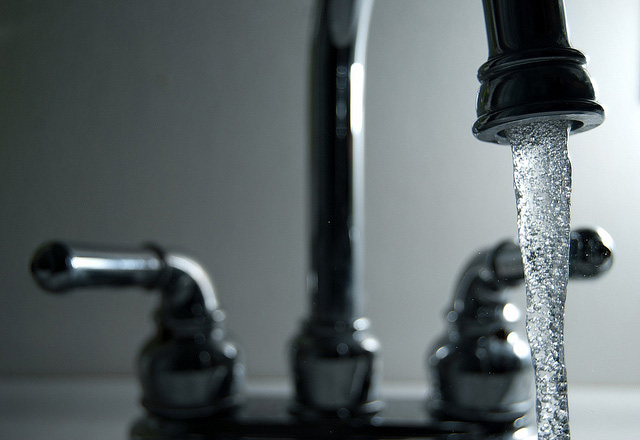
How would you feel if your child’s school water supply was murky and yellowish water? You would likely be outraged, like the community in Watts, California is.
South Los Angeles residents were shocked to learn that, in January 2016, they were exposed to six-hours worth of untreated well water. And many residents are just now finding out about it. The affected water supply serves about 20,000 residents in Watts and neighboring Green Meadows, according to LA Times.
Paint Thinners and Pesticides
Five elementary schools in Watts are affected. Plastic bags are covering water fountains and the children are being given plastic water bottles, because of the “discolored water flowing from [the schools’] taps and fountains,” reports Angel Jennings for the Los Angeles Times.
Untreated water is a serious problem. According to the County of Los Angeles’ Public Health:
Water — particularly water drawn from sources near populated or industrialized areas—also frequently contains a variety of chemical impurities. Hazardous household waste like paint thinner or antifreeze that is improperly disposed of can migrate from disposal sites and contaminate water sources; pesticides applied to crops can be carried to lakes and streams after a heavy rain. Some water impurities cause significant health problems. High levels of the bacteria E. coli have been linked to gastrointestinal illness; high levels of arsenic have been tied to cancer.
As reported in the Los Angeles Times, the State Water Resources Control Board found that the Los Angeles Department of Water and Power (DWP) violated federal law by not coming clean about the incident within the next business day; the Department could be forced to pay “$1,000 per day for each day the violation occurred,” but that’s really a small fee compared to what Watts residents were potentially exposed to. Marty Adams, DWP’s senior assistant general manager in charge of the water system, explains that the horrible incident “was not reported up the chain,” reports the Los Angeles Times.
The Department insists that the water in the five schools is safe to drink — no bacteria was discovered and chlorinated levels are consistent with federal guidelines. Yet the Department is still investigating the citywide discoloration. While the investigations are ongoing, it’s worth mentioning that Los Angeles’ water quality has taken a serious nosedive. Data from 2015 shows that L.A. has a problem of contaminated wells and contaminated groundwater.
This issue definitely hits home for me. As a Los Angeles native, I have a hard time hearing about my community experiencing this injustice. For those of you not familiar with the city, Watts is a city in the South Los Angeles region with a median household income of $25,161. Using data from the Los Angeles Times, Watts is overwhelmingly made up of uneducated Latino (61.6 percent) and black (37.1 percent) — only 2.9 percent of Watts residents over 25 have a four-year degree.
The similarities between Watts and Flint are unsettling. Both crises affected poor communities of color. And there’s a layer of deceit in both cases and an all around feeling of failed leadership. Would this type of incident happen in Beverly Hills?
Take Action!
Clean water is a basic human right. It’s downright inexcusable that Los Angeles residents have to deal with yellow, cloudy and possibly contaminated water. Sign and share this petition urging California’s State Water Resources Control Board to clean up Los Angeles’ water supply.
Media that fights fascism
Truthout is funded almost entirely by readers — that’s why we can speak truth to power and cut against the mainstream narrative. But independent journalists at Truthout face mounting political repression under Trump.
We rely on your support to survive McCarthyist censorship. Please make a tax-deductible one-time or monthly donation.